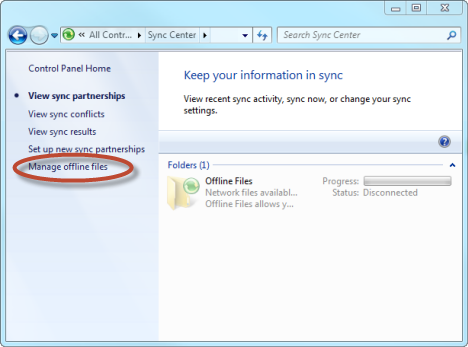
It’s a great way to keep folders stay the same on all the computers.
Folder sync windows 7 update#
When you change the files on one computer, the other computers will update too. The synchronization operation can help you keep files in multiple locations up-to-date. First copy the folders to the USB on one computer and then paste the folders on another computer, which is quite inconvenient and also time-consuming.įortunately, things will become easy with the help of file sync. In the past, you may have tried the USB flash drive to make it.

And moving files from one computer to another one is a regular thing to do. Nowadays, more and more people own two or more computers at the same time. You can use Markdown with $\LaTeX$ formulas in your comment.The need to sync folders between two computers Feel free to leave a reply using the form below. Most of the help came from this question on. This is the best solution I’ve found for now (given that, for good reasons, autorun.inf files don’t work any more). In the latter case, you can check the “Start the task only if the computer is on AC power” option in the Conditions tab of your event.

The plus side of this behavior is that your files are synced as well, but it turns into a minus side if you are using a (battery-powered) laptop.
Folder sync windows 7 software#
Note that this approach has multiple limitations: if the drive letter for you key changes, you’ll have to configure the pairing again, and software re-plugs of USB drives tend to occur quite frequently (every 5 min on my machine). Beware, the command line is case sensitive. The argument should be "-R PairName" (where “PairName” is, guess, the name you gave to the pairing in SyncToy).
Folder sync windows 7 install#
In the Start a Program window, browse to SyncTo圜md.exe (in SyncToy’s install folder).

Plug our key in and out once or twice and spot the new events in the log note the ID of the last one (make sure the description has something to do with the particular USB drive you inserted) and report it in the Task Scheduler. The USB insertion event is a little hard to find: on my system, it was located in Event Viewer/Applications and Services Logs/Microsoft/Windows/DriverFrameworks-UserMode/Operational. In the Triggers tab, create a new “On Event” trigger.

You’ll find it in Start Menu → Accessories → System Tools. Next, create an event using the Task Scheduler, which is installed by default on Windows 7. Plug your drive in and establish a folder pairing between your two folders, in our example D:\SyncFolder and C:\Users\Me\SyncFolder (for more information, check out this tutorial on folder pairing with SyncToy).


 0 kommentar(er)
0 kommentar(er)
